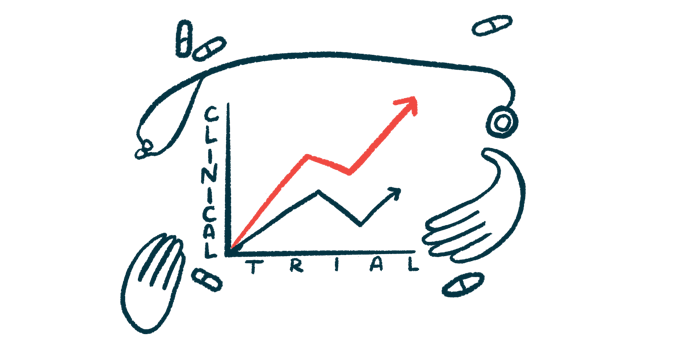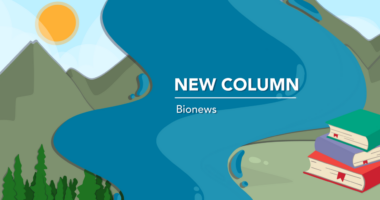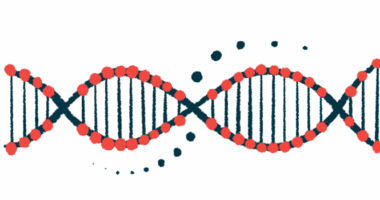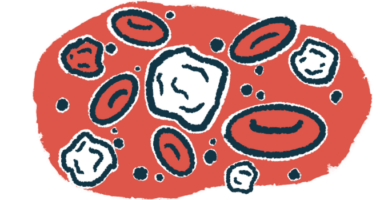Losartan use found to safely ease RDEB symptoms in children in trial
Positive result 'sets stage' for Phase 3 study of blood pressure medicine

Treatment with losartan, a commonly used oral blood pressure medication, safely reduced the signs and symptoms of recessive dystrophic epidermolysis bullosa (RDEB) in children, according to the results of a Phase 1/2 clinical trial.
The repurposed medication particularly benefited young patients with severe disease, and was well tolerated with no serious safety concerns — including effects on blood pressure — the researchers noted.
“We show that the widely available losartan is a safe and efficient symptom-relief therapy for RDEB and provide evidence in the largest cohort [group of patients] treated with losartan so far,” the team wrote.
“Our trial sets the stage for a [randomized], Phase [3] clinical trial to assess the effects of losartan in people with RDEB,” the researchers added.
The trial’s results were detailed in “Safety and tolerability of losartan to treat recessive dystrophic epidermolysis bullosa in children (REFLECT): an open-label, single-arm, phase 1/2 trial,” a study published in eClinicalMedicine.
Phase 1/2 trial tested use of losartan repurposed for RDEB
In RDEB, mutations in the COL7A1 gene lead to a faulty or missing C7, a protein that helps connect skin layers. Without this protein, skin connections become fragile, resulting in symptoms such as blisters and scar tissue formation. Other body parts, such as the digestive tract, kidneys, mouth, and eyes, may also be affected. Chronic itch and pain associated with RDEB can also significantly limit patient quality of life.
While there’s no cure for RDEB, available topical treatments can reduce the chance of blisters by protecting the skin from damage. Treating blisters promptly also can help to prevent infections or further damage.
One available medication is Filsuvez (birch triterpenes), a topical gel approved to help promote wound healing in RDEB.
Because RDEB is systemic, meaning it can affect multiple organs and tissues in the body, there’s an “urgent unmet need for safe treatments limiting RDEB’s systemic disease advancement,” the researchers wrote.
Losartan (sold as Cozaar, among others) is a well established medication with a benign safety profile that’s used to treat high blood pressure and other conditions in children and adults.
In a previous study using an RDEB mouse model, systemic treatment with losartan reduced inflammation and scar tissue formation, alleviating symptoms and slowing disease progression.
These data prompted a team led by researchers in Germany to hypothesize that “repurposing losartan for RDEB would constitute a safe and effective approach to prevent systemic disease progression in children with RDEB,” per the study.
To test this hypothesis, the team launched REFLECT, an open-label (no placebo) Phase 1/2 clinical trial (EudraCT, 2015-003670-32). REFLECT evaluated the use of losartan in 29 children — 16 boys and 13 girls — ages 2-14 with moderate or severe RDEB. Most (82.8%) had received at least one previous and/or ongoing treatment or had a coexisting disease.
Over 10 months, the children received increasing doses of oral losartan: first, for about four months, doses ranging from 0.4 to 1.4 mg/kg, then about six months at a full dose, followed by a month of dose reduction and a three-month follow-up without the drug.
Greatest benefits seen among patients with severe disease
Alongside safety and tolerability, the study assessed the impact of losartan use on disease activity, inflammation, scar formation, and quality of life. Assessments were done at week 40 (about nine months), or at the end of the full dose phase. Treatment efficacy was compared with pretreatment, or baseline, assessments.
At week 40, nearly half of the patients (46.4%) treated with losartan saw a clinically meaningful reduction in disease activity, as indicated by an at least nine-point drop in the activity score from the Epidermolysis Bullosa Disease Activity and Scarring Index (EBDASI). The overall mean drop was 7.36 EBDASI activity points. Similar results were seen among boys and girls.
A reduction in disease activity was more prominent in patients with severe RDEB than in those with moderate RDEB (11.06 vs. 2.42 points). Likewise, greater reductions in the EBDASI total score occurred in severe versus moderate cases (22.13 vs. 12.18). The EBDASI damage score showed a mean decrease of 10.50 points.
Our results suggest that losartan was well tolerated by children with RDEB, and provide preliminary evidence that it may reduce disease burden.
Upon examination, losartan treatment led to clinically meaningful improvements in skin involvement, with fewer skin lesions and less redness. After losartan was withdrawn at the end of the study, skin involvement gradually worsened.
Losartan’s benefits were confirmed in other assessments, including the Birmingham EB severity score, patient-reported pain, and itch and quality of life (Children’s Dermatology Life Quality Index). The Wong-Baker FACES Scale for Pain showed an improvement of at least one level in nine of 28 patients, or nearly one-third of the children. Sleep improved in 12 of the 28 children assessed and worsened in three, which researchers called a “specifically interesting observation.”
Significantly decreased levels of TNF, a protein marker for inflammation, were observed at week 40, alongside signs of reduced scar formation among patients who provided skin biopsies.
Losartan was well tolerated, with no treatment-related severe complications leading to serious safety concerns. No blood pressure or heart-related anomalies were noted.
“Our results suggest that losartan was well tolerated by children with RDEB, and provide preliminary evidence that it may reduce disease burden,” the researchers wrote, adding that “further research with larger sample sizes and longer durations is needed to establish the treatment’s long-term efficacy and safety.”








